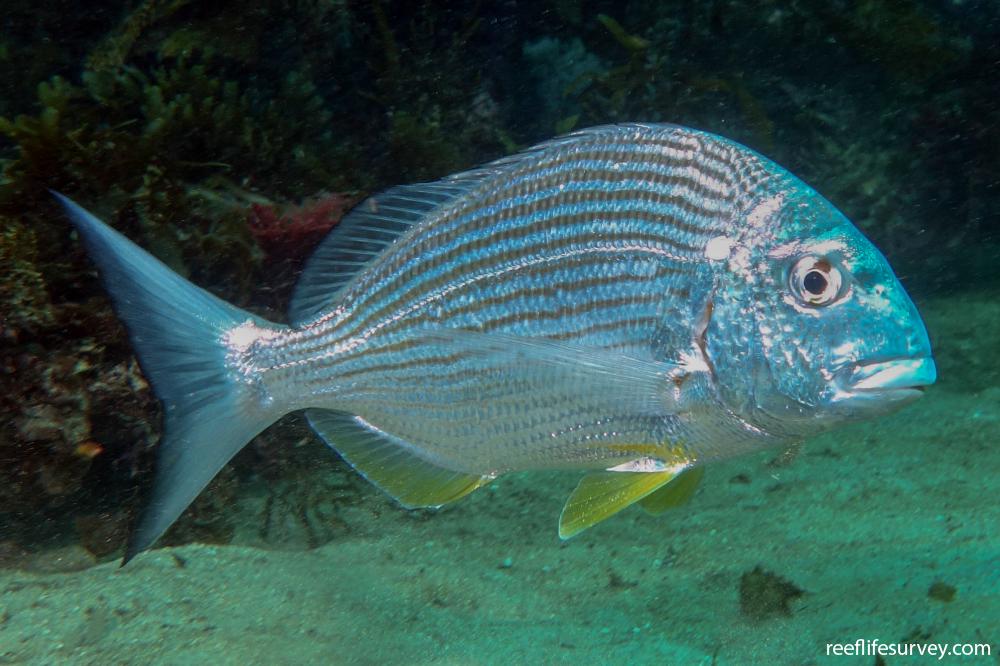Rhabdosargus sarba
Tarwhine | Goldlined Seabream | Natal Stumpnose | Silver Bream | Silver Sea Bream | Yellowfin BreamSimilar Species
Same Genus
Distribution
Temperate Africa, Temperate Australasia, Temperate northern Pacific, Tropical Indo-Pacific
Description
High rounded body profile, scales forming thin gold stripes along the side, and yellow pelvic and anal fins. No black spot on pectoral base, anal fin usually yellow, and less angular snout profile distinguish it from Acanthopagrus australis (Yellowfin Bream). It differs from the two bream species in having six rather than four rows of scales above the lateral line, and distinct yellow lines following the scale rows along the body. The species occurs on shallow coastal reefs and also regularly enters estuaries. It is caught by line and occasionally seen by divers but is not as abundant as bream or snapper.
Information
Max Size: 80 cm
Sea Temperature Range: 15.3-26.9°C
Depth: 0-20 m
Habitat Generalization Index: 11.43
Also referred to as the SGI (Species Generalisation Index), this describes the habitat niche breadth of the species. Species with values less than 15 are found in a relatively narrow range of reef habitat types (specialists), while those over 25 may be found on most hard substrates within their range (generalists). Learn more here.
Conservation and Rarity
IUCN Status: Not Evaluated
Occurrence: Frequent (16.9% of sites)
Occurrence describes how often the species is found on surveys within its distribution. It is calculated as the % of reef sites surveyed by RLS divers across all the ecoregions in which the species has been observed
Abundance: Many (11 per transect)
Abundance is calculated as the average number of individuals recorded per RLS transect, where present.
Edit by: GJ Edgar. 2008. Australian Marine Life. New Holland, Sydney











